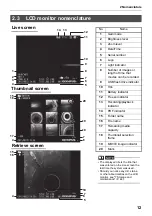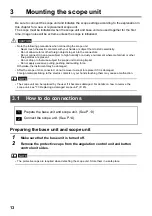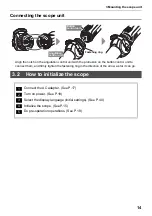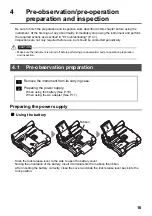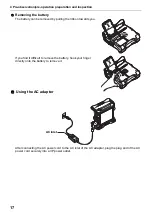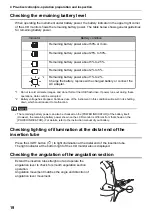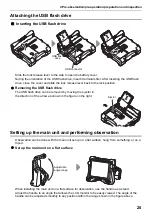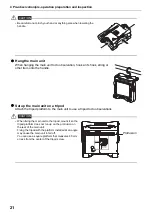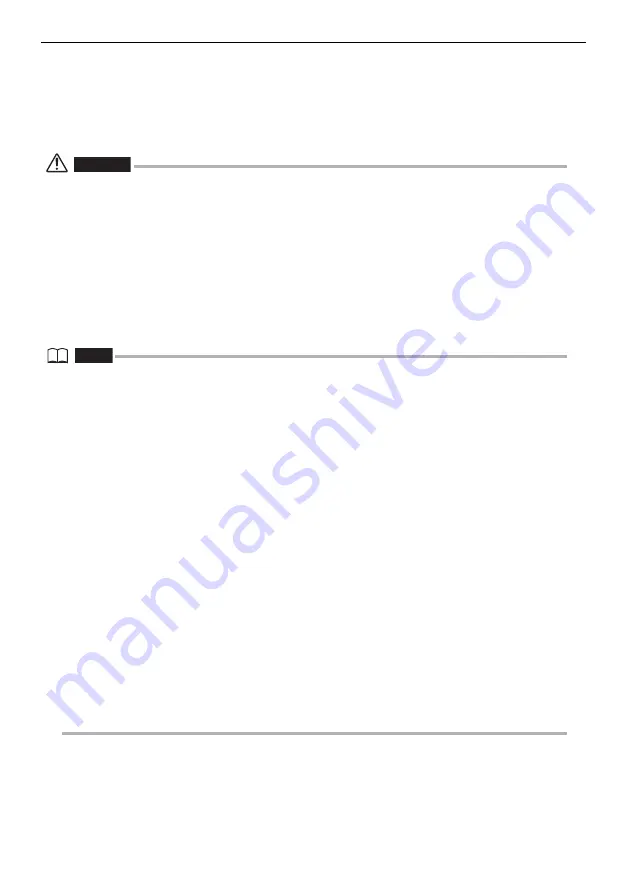
6
•
Do not leave the battery in a location subject to moisture, water leakage or extremely high or low
temperatures.
•
Do not touch the battery terminals while your hands are wet.
•
If you do not plan to use the battery for a long time, remove it from the main unit and store it in a
dry place. Otherwise, battery fluid leakage or overheating may result in a fire or injury.
•
Keep the battery out of the reach of small children.
CAUTION
•
If you are experiencing problems loading the battery, do not try to force it in.
Check the orientation of the battery and check the terminals for abnormalities. Trying to force the
battery into the compartment may cause malfunction.
•
If you are having problems removing the battery from the instrument, do not apply undue force.
Contact Olympus.
•
When disposing of a battery, be sure to do so in accordance with all local laws, rules, and
regulations.
Before disposing of a battery, check your local laws, rules, and regulations and follow them
accordingly.
•
When replacing the battery, do not suddenly insert or remove it repeatedly.
Doing so may prevent the power from turning on.
NOTE
•
Be sure to recharge the battery before using it for the first time after purchase or after it has not
been used for a long period.
•
In general, the battery performance drops as the ambient temperature drops. Note that battery
performance that degrades due to low temperatures recovers when the temperature rises to a
normal level.
•
Contamination of battery electrodes with sweat or oil will cause contact failures. When the
battery is dirty, wipe it clean with a dry cloth before use.
•
Use the battery correctly. Otherwise, battery fluid leakage, overheating, or damage may result.
Insert the batteries in the correct direction when replacing them.
•
A full charge will provide approximately 150 minutes (generally speaking) of continuous
operation. Actual operating time depends on the charging method, the operating environment,
and the instrument's settings. Preparation of multiple spare batteries is recommended when long
hours of battery-powered operation are expected. The battery charging time is normally about
two hours and 30 minutes (generally speaking).
•
Recommended temperature range for Li-ion battery operation.
-
Discharging (using main unit): -10
°
C to 40
°
C
-
Charging:
0
°
C to 45
°
C
-
Storage:
-20
°
C to 60
°
C
Using the battery under a temperature outside the above temperature ranges will result in
degradation of its performance and service life. When storing the battery, be sure to remove it
from the main unit.
•
The battery is a consumable item.
•
The battery cannot be charged using the instrument. For information on charging the battery,
refer to the manual that came with the battery charger.
Summary of Contents for IPLEX TX
Page 1: ...INSTRUCTIONS INDUSTRIAL VIDEOSCOPE IPLEX TX ...
Page 3: ......

















